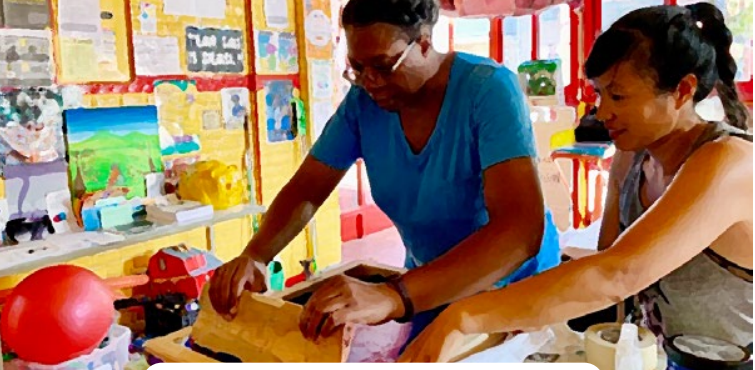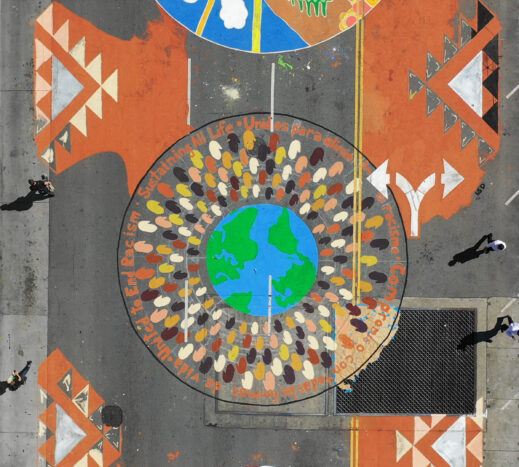
View this resource
as a PDF >>
****
View this resource
in French >>
****
View this resource
in Spanish >>
The power of art to organize, to connect and educate has always put artists and art at the forefront of revolutions and social movements. In this period, artists are playing key roles in calling attention to, and organizing around, the climate crisis. Artists are working with designers, architects and scientists to
create sustainable environments and ecosystems. Art to end the climate emergency communicates the reality of the situation: the heartbreak of loss, devastation, and destruction, and the possibility of repair, recovery, equity, and community.
All of us are from peoples that used and continue to use all forms of art to communicate powerful ideas and shape their lives and the world around them.
Throughout history, art has been used to cross communication barriers, and to lift the voices of oppressed people. It is made by humans everywhere, the young and the elderly. People create art to think, express, transform and envision. Generations of people preserve culture and the intelligence of a people through art making. Culture is passed on and preserved through its art.
Whether it be in our clothing, adornment, words, song, dance, architecture, painting or photography,
art reflects and can restore our connection to and interdependence with one another, the land, and the earth itself. Indigenous and Global Majority people*1 have had art as an integral part of their way of life. Artmaking has been an essential way to share generations of their knowledge and show the caring
relationships with the land, water, peoples, and other living beings.
Through the development of capitalism and oppression, however, artists and their art are often reduced to commodities, products to be exchanged, and made into profit. Culture is bought and sold. Capitalism directly alters what sorts of creativity we think are valuable. In our consumer society, standardization, quantity, and profit are the main goals. A very small percentage of artists are now part of a global market of investment that helps to grow the wealth of the owning class.
Most artists are compensated, at most, a small fraction of their artworks value, setting up a culture of scarcity and competition. These oppressive forces can impact our inherent human capacity for creative thinking and action, our initiative and commitment to make art, and our connection to one another.
Many poor and working-class artists who are not from globally dominant countries are exploited into making art for mass production for slave and meager wages. Their artwork is exported and funneled
toward markets in the Global North for buyers to unawarely consume. This cycle of mass production, consumption and extraction of our natural surroundings lies at the center of the climate crisis.
Artists, and our art play a critical role in the collective effort to build and fight for a just world and a thriving environment. Like others, we need opportunities to share and celebrate our efforts, our successes, and defeats.
Sustaining All Life offers tools for us artists to recover from the impact of working in exploitative and oppressive systems, including the competition for limited resources and the marginality many of us face. With this support we can continue building a united front and creating artwork that engages, inspires, and moves us toward a sustainable world where we live in concert with each other and everything around us, a world with us in the center of our lives, communities, and movements.
* The peoples of Africa, Asia, the Pacific Islands, the Caribbean, and Latin America, and those descended from them, are over eighty percent of the global population. These people also occupy most of the global land mass.
Using the term “Global Majority (GM)” for these people acknowledges their majority status in the world and interrupts how the dominant (U.S. and European) culture assigns them a minority status.
Many Global Majority people living in dominant-culture countries have been assimilated into the dominant culture—by force, in order to survive, in seeking a better life for themselves and their families, or in pursuing the economic, political, or other inclusion of their communities. Calling these people “Global Majority” contradicts the assimilation.


